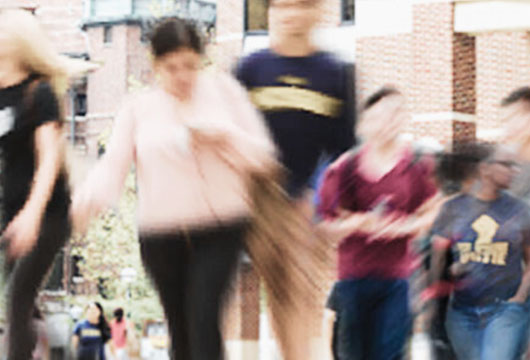As we end the fall term and look forward to winter, students and faculty are confronting significant turmoil around the world, as well as protests and passionate discussions within academia. Whether it’s the horrible incidents of violence in this country or elsewhere across the globe, or incidents of racial bias that have led to protests and heightened rhetorical exchanges on a number of campuses, distressing events far from home and close to it are likely to be on students’ minds.

At this point in the term, the disturbing events of recent weeks have the potential to make an already stressful time of the year even more difficult for many students. What can instructors do?
- Acknowledge the incidents: Research conducted in the wake of national tragedies, such as 9-11 or Hurricane Katrina, indicates that students find it helpful when their instructors simply acknowledge traumatic events, recognize that students might be experiencing distress, and show extra support, such as offering to grant extensions for students who request them. (Huston & DiPietro, 2007)
- Refer students to campus resources: Offices include Counseling and Psychological Services (CAPS ), Depression Center, Psychological Clinic. CRLT’s blog post on Supporting Students in Distress offers an overview of resources and advice on this topic, including this web page from the Mental Health Workgroup which offers resources for instructors who encounter students in need of mental health support.
When planning for courses next term, it is useful to keep in mind that the turmoil of recent weeks may still be on students’ minds—and therefore enter your classrooms, whether you anticipate it or not. Because these issues in so many ways relate to differences in social identity and power—and because so many of our students have personal or family connections to places experiencing crisis—events in the news may also influence ongoing conversations about the campus climate here in Ann Arbor.
Over many years, CRLT has developed guidelines for discussing difficult topics to support teachers in facilitating such conversations in classrooms across the curriculum. If you want to raise topics from the news in your classes in order to explore connections between course material and contemporary events, you can find strategies for planned discussions of high-stakes topics. Other resources offer you ways to prepare for and respond to challenging conversations that emerge when you haven’t planned for them.

In our structured and unstructured discussions and dialogues, we also will have many opportunities to explore some challenging, high-stakes issues and increase our understandings of different perspectives. Our conversations may not always be easy; we sometimes will make mistakes in our speaking and our listening; sometimes we will need patience or courage or imagination or any number of qualities in combination to engage our texts, our classmates, and our own ideas and experiences. Always we will need respect for others. Thus, an important second aim of our course necessarily will be for us to increase our facility with the sometimes difficult conversations that arise inside issues of social justice as we deepen our understandings of multiple perspectives – whatever our backgrounds, experiences, or positions.

Whether you choose to address such issues head-on in a similar way, or you just want to respond productively if students raise sensitive topics, it's helpful to plan ahead. In addition to our online resources, CRLT consultants are also available to consult with individual instructors about effective ways to raise or respond to high-stakes conversations in your classrooms.
Huston, T. A., & DiPietro, M. (2007). In the eye of the storm: Students’ perceptions of helpful faculty actions following a collective tragedy. In D. R. Robertson & L. B. Nilson (Eds.), To improve the academy (pp. 207-224). Bolton, MA: Anker Publishing.
- Log in to post comments
- 215 views






